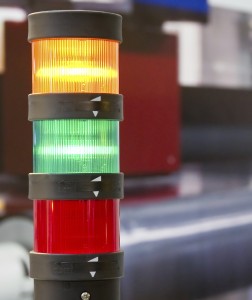 For over a hundred years, manufacturers have talked about ‘efficiency’ so much that sometimes the word just blends into the background. Every business seeks more efficiency, but manufacturers have an advantage because they can examine every step of their process. As integrators improve the examination process, manufacturers gain more insight into inefficiencies that can be corrected.
For over a hundred years, manufacturers have talked about ‘efficiency’ so much that sometimes the word just blends into the background. Every business seeks more efficiency, but manufacturers have an advantage because they can examine every step of their process. As integrators improve the examination process, manufacturers gain more insight into inefficiencies that can be corrected.
We help manufacturers develop better tools and processes so that they have a clear picture of what is occurring on their lines. Journalists say a picture is worth a thousand words, but for a manufacturer, data is worth a thousand words. One of the areas manufacturers can benefit from better examination is with scanning and processing materials. We’ve improved our client’s efficiency by capturing and conveying scanning data in a way that makes sense.
The Problem with Missed Scans
Within a line, products and materials need to go from point A to point B. The logistics are dependent on properly scanned barcodes. When stationary scanners miss scans, materials are misdirected. There are multiple reasons that cause a missed scan and these are not always apparent. Manufacturers waste valuable time trying to determine why the product did not arrive at the planned location. These missed scans result in decreased throughput of the system.
As consumer demand increases in the global market, market pressures are pushing manufacturers and the global supply chain to new heights. These pressures include coping with large datasets, referred to as Big Data. The problem is that Big Data remains underutilized, especially in floor level operations.
To help a client face these pressures, we demonstrated a way for manufacturers to display scanner statistics through an HMI to decrease the likelihood of missed scans.
“We display the (scanner) statistics visually on an HMI so that an technician can understand what happened with a quick glance. The alternative method of tracking this information is to scroll through lines of code and compare data fields within the PLC. Scanner statistics provide a troubleshooting snapshot when used as a diagnostic tool to improve operational efficiency.”
Streamlining Data Through an Interface
We utilize scanner statistics to give our clients a better understanding of material handling throughout the process. Statistics capture and display SKU codes, failed or ‘no reads’, product counts by line. This information is then used to calculate a read rate percentage. There is also a print screen function. So, when an issue occurs, the statistics will help guide you to the failed decision point that resulted in miss directed product.
Big Data can be a valuable source of information, but it needs to be turned into information that is easy to understand with a glance. To convey this information, we display the statistics visually on an HMI so that an technician can understand what happened with a quick glance. The alternative method of tracking this information is to scroll through lines of code and compare data fields within the PLC. The problem is identified and corrected. Scanner statistics provide a troubleshooting snapshot when used as a diagnostic tool to improve operational efficiency.
Manufacturers can gain unprecedented insight into the physical reality of their operations but improving decision-making and tapping into new sources of profit requires more than new hardware. Processes need to change so that these new technologies can augment your workers on the line.
Cisco’s analysis reveals the quality of a company’s technology infrastructure and tools is the single most important factor in determining the amount of value realized from these efforts, but:
A strong technology foundation, while insufficient on its own, is required for companies to capture Value at Stake. People-centric management practices and strong information management loom large as the top priorities in the shift. The combination of “people” and “process” enablers represent more than half of the total value realized.
Various company interviews and studies report that a majority of CEOs say that their companies need to do a better job of capturing and understanding information rapidly in order to make swift business decisions.
Data Needs an Interface
Data Analytics can combine and display information in an HMI to help manufacturers make decisions, but is not in itself a differentiator. Manufacturers need to change the way we look at manufacturing and global supply chain in order to fully take advantage of Big Data.
Leading manufacturers are continuously finding ways to leverage their information. They are using it to replace intuition and guesswork and are adopting a data-driven approach to decision-making. Software systems, sensors, processors, and communication devices can use Big Data to make decisions throughout the manufacturing process in real time. With the emergence of the Internet of Things, manufacturers are already benefitting from an interconnected, networked factory environment where sensors, robots, machines, and more can all be connected to leverage this deluge of data.
Businesses can increase operational efficiency, get products to market faster, decrease downtime, easily locate assets, adapt to changing markets, gain flexibility and improve decision making but they need help. We can help you get the information you need from Big Data. Give us a call today to find out more.



